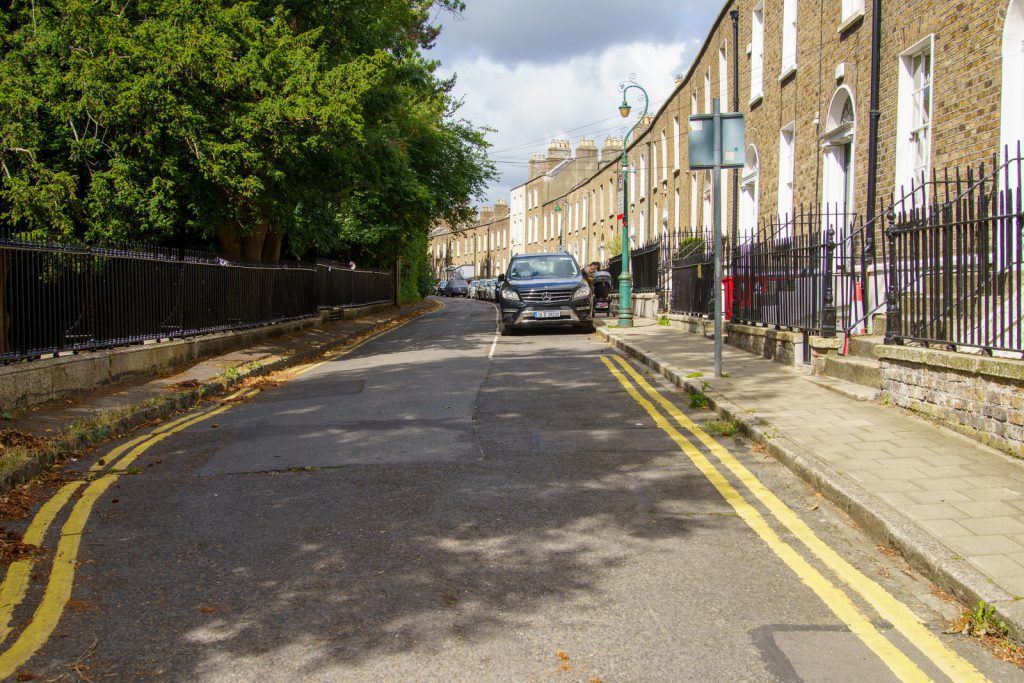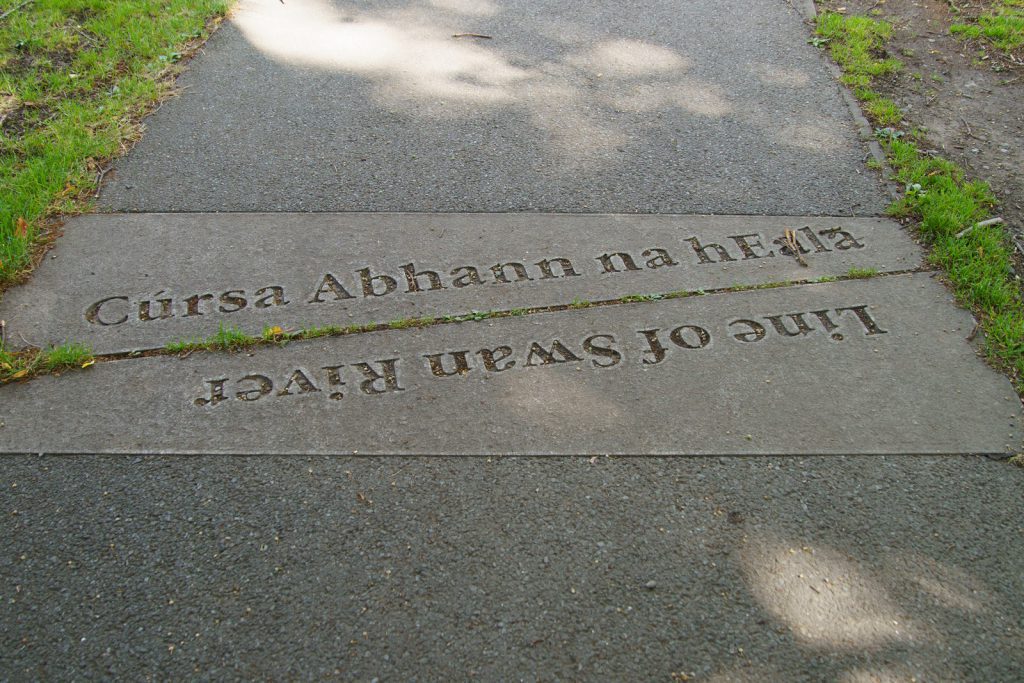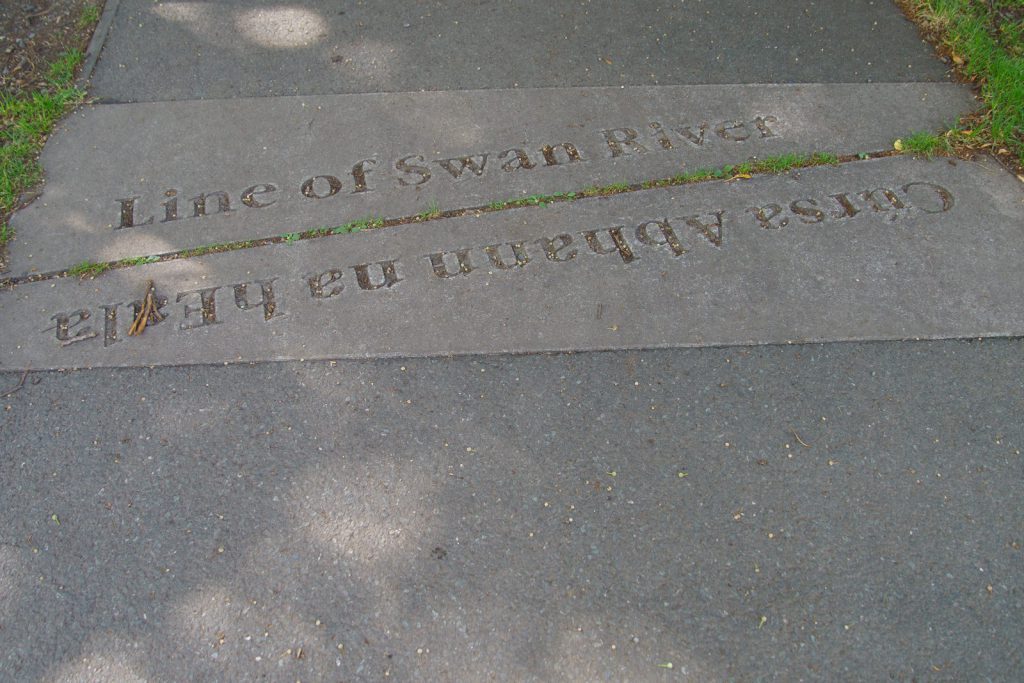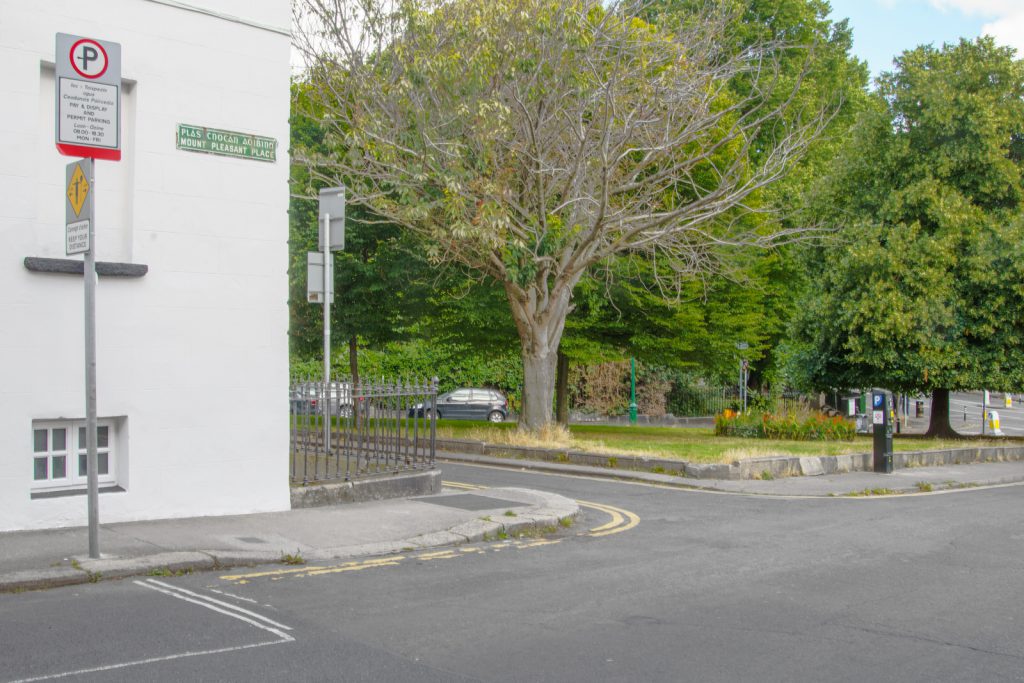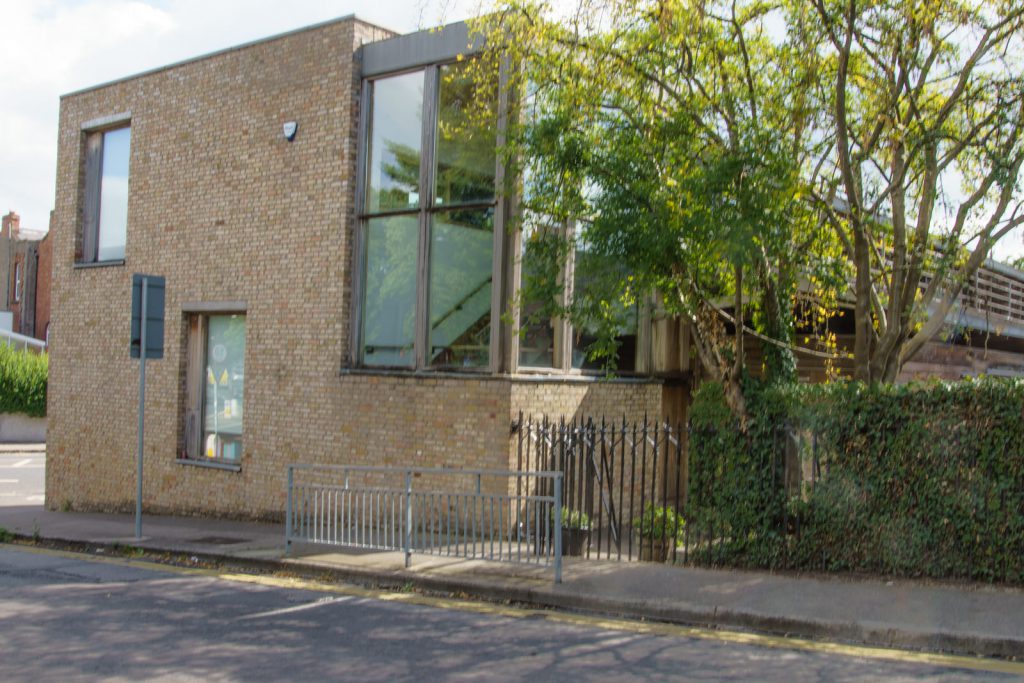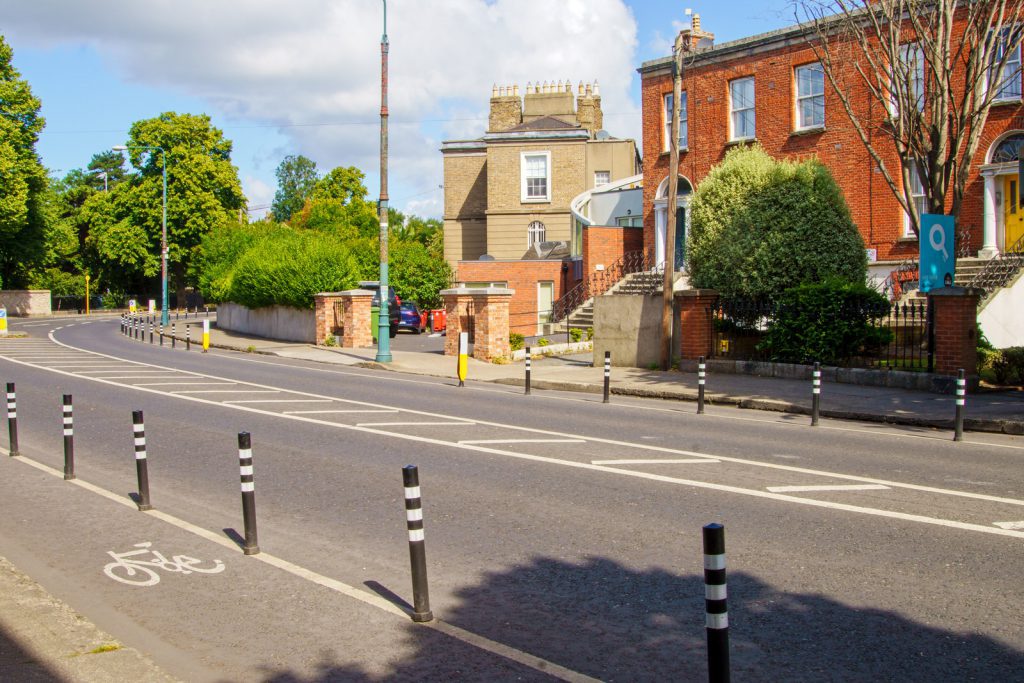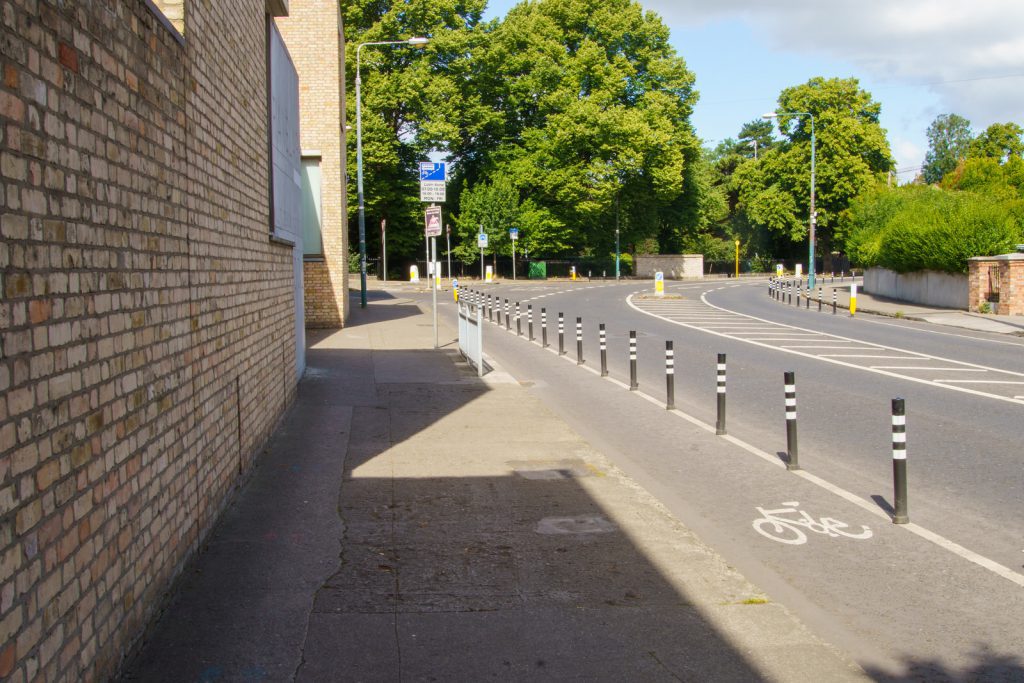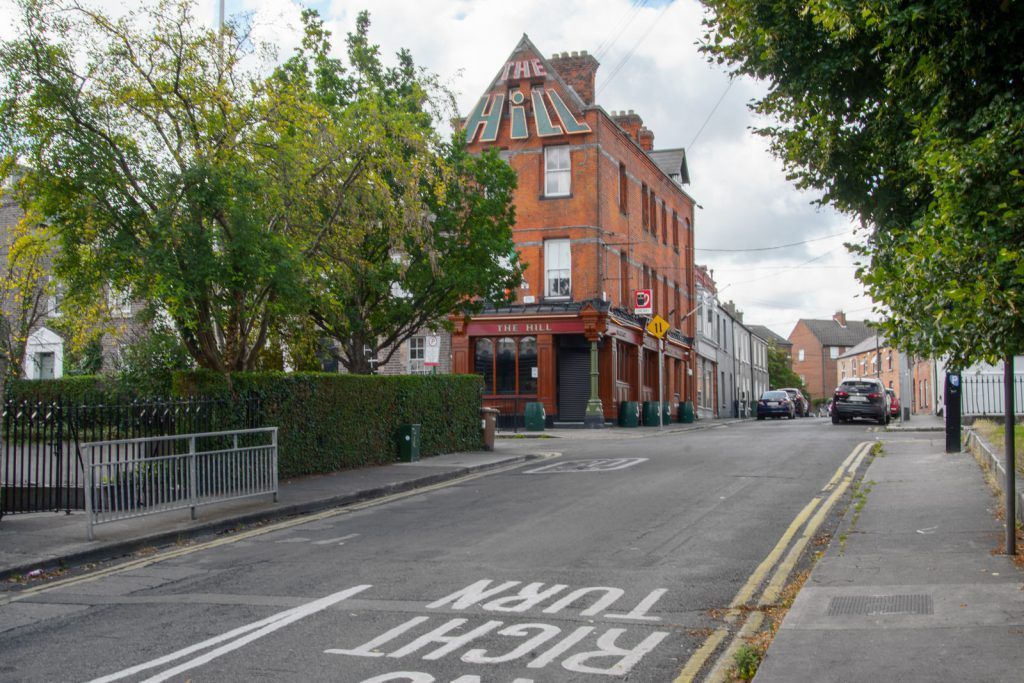WHERE THE SWAN RIVER FLOWS
The Swan River, although now hidden from view, defines the landscape and topography of Ranelagh. From its source near Kimmage Manor it flows through Rathmines and Ranelagh and joins the River Dodder below Ballsbridge. In Ranelagh it flows to the east through Mount Pleasant Square (where the arch leads out to Mount Pleasant Avenue) before crossing into Ranelagh Gardens.
The small public park beside the tennis club is unsatisfactory. It was the subject of a planning controversy in the 1970s. At one point it seemed inevitable that the thin sliver of land would be given over to a garage, but a well-orchestrated outcry ensured its survival as a public amenity.
The houses at Old Mountpleasant predate the houses in Mountpleasant Square. Among the early residents was Thomas Ivory, a Corkman who was one of the most important architects working in Dublin in the latter part of the 18th Century (and the only one of the three major architects of Georgian Dublin who was Irish). Ivory designed a number of significant surviving buildings in the city including the Blue Coat School (now the Law Society Headquarters in Blackhall Place) and Newcomen Bank in Castle Street (now the Rates Office). He was also Master of the Architectural Drawing School in Dublin. He died in 1786.
Mount Pleasant Square is a Georgian garden square on the border of Rathmines and Ranelagh.
Completed in 1834, the square is widely celebrated for its elegance and quiet charm. In her article in The Georgian Squares of Dublin, Susan Roundtree writes: “It has justifiably been described as one of the most beautiful early 19th-century squares in Dublin.” In the 24 March 1978 edition of In Dublin magazine, Gordon Lynch wrote, “The recently face-lifted Mount Pleasant Square, which is protected by a preservation order, is the only curved square in Dublin, if such a thing is possible.”
There are 56 terraced houses on three sides of a central open space, now housing a tennis club and a small public park. The north and south sides are crescents rather than typical borders of a square. About half of the houses are occupied by young families, while several remain in apartments. Homes on the west side have south-west facing back gardens, there is a Victorian Era post-box on the south-west corner of the square, and 24-hour disc parking is enforced.
Mount Pleasant Square is about 100 yards from where the Ranelagh Gardens once stood. The public park beside the LUAS station is all that remains of what were once far more extensive grounds. Richard Crosbie became the first Irish person to fly a balloon when he took off from the gardens in 1785. Crosbie wanted to cross the Irish Sea, but only made it to Clontarf. After the Act of Union in 1801, middle-class professionals abandoned Georgian mansions on the northside, and moved to places with smaller, more manageable houses in new southside suburbs such as Rathmines and Ranelagh. As Susan Roundtree notes: “The first suburban boom accelerated during subsequent generations and established the pattern of city centre migration to the suburbs.


